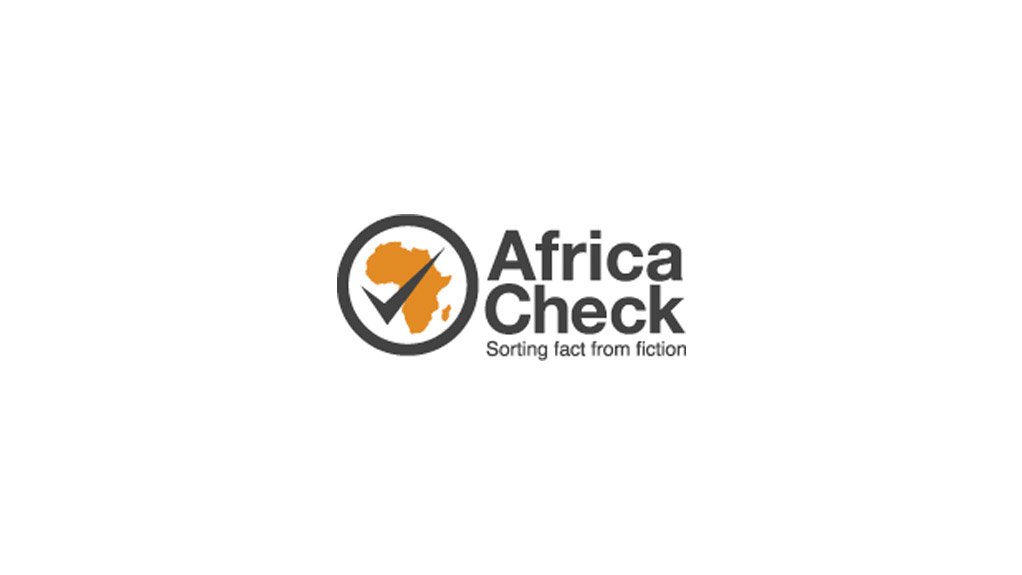An art installation called SA´s Dirty Laundry plans to string up 3,600 pairs of underwear in Johannesburg, South Africa, to draw attention to sexual violence.
An article by one of the installation’s creators, Nondumiso Msimanga, explains the calculations behind the figure: “A 2010 study by the Medical Research Council found that just one in 25 in Gauteng even reported rape. Extrapolated from figures at the time, it could have meant that up to 3,600 people in South Africa were raped every day.”
However, the installation’s other creator, Jenny Nijenhuis, said that “the number 3,600 is symbolic of the number of people in South Africa who are raped or sexually abused every day”.
Is either of these claims supported by data?
Confusion between sexual offences & rape
There’s a lot that is wrong with the claims and the reasoning behind it. To start: the artists differ on whether the underwear represents rapes or sexual assaults.
There were 64,921 sexual offences reported to the police in 2010/11 – the period Msimanga says the calculation is based on. Sexual offences is a broad crime category which includes sexual crimes like sexual assault, incest, bestiality and flashing. Included in the figure was 48,158 reported rapes.
But when you apply the reporting rate they used to either of these statistics (which you shouldn’t, see below) the daily crime count does not work out to 3,600.
When you run the numbers it results in 4,447 sexual offences per day or 3,298 rapes per day.
Regional reporting rate misused
Based on their reasoning, the figure of 3,600 is wrong. However, the methodology they used is also flawed.
The reporting rate cited by Msimanga – one in 25 rapes – can’t be applied to South Africa as a whole. This is because it was a regional study of Gauteng and, as a result, the findings are not nationally representative.
Furthermore, the rape reporting rate is only for Gauteng women aged 18 years and older.
South Africa’s rape definition is very broad. It states that “any person (‘A’) who unlawfully and intentionally commits an act of sexual penetration with a complainant (‘B’), without the consent of B, is guilty of the offence of rape”. This includes the oral, anal or vaginal penetration of a person with a genital organ, anal or vaginal penetration with any object and the penetration of a person’s mouth with the genital organs of an animal.
This means that national rape statistics include male and child victims. In 2015/16, child rapes accounted for 37% of all reported rapes.
Because of this female reporting rates cannot be applied to South Africa’s rape statistics as a whole.
Unfortunately, there is no recent, nationally representative data on how many rapes are reported in South Africa. South Africa’s 2016 Demographic and Health Survey is expected to provide much needed nationally representative data on sexual violence.
Conclusion: The calculation & methodology is flawed
An art installation called SA´s Dirty Laundry claims that 3,600 rapes – or sexual offences – are committed each day in South Africa. However, their calculations are flawed.
They used a reporting rate for Gauteng women aged 18 and older. This reporting rate cannot be applied to national rape statistics, which include male and child victims.
Sexual violence is one of South Africa’s most pressing social problems but we know very little about its true extent and scale. Fabricated rape statistics shouldn’t be used to plug these holes in our knowledge.
Accurate information – no matter how limited – should be the basis of any form of advocacy.
Researched by Kate Wilkinson, Africa Check
EMAIL THIS ARTICLE SAVE THIS ARTICLE
To subscribe email subscriptions@creamermedia.co.za or click here
To advertise email advertising@creamermedia.co.za or click here











